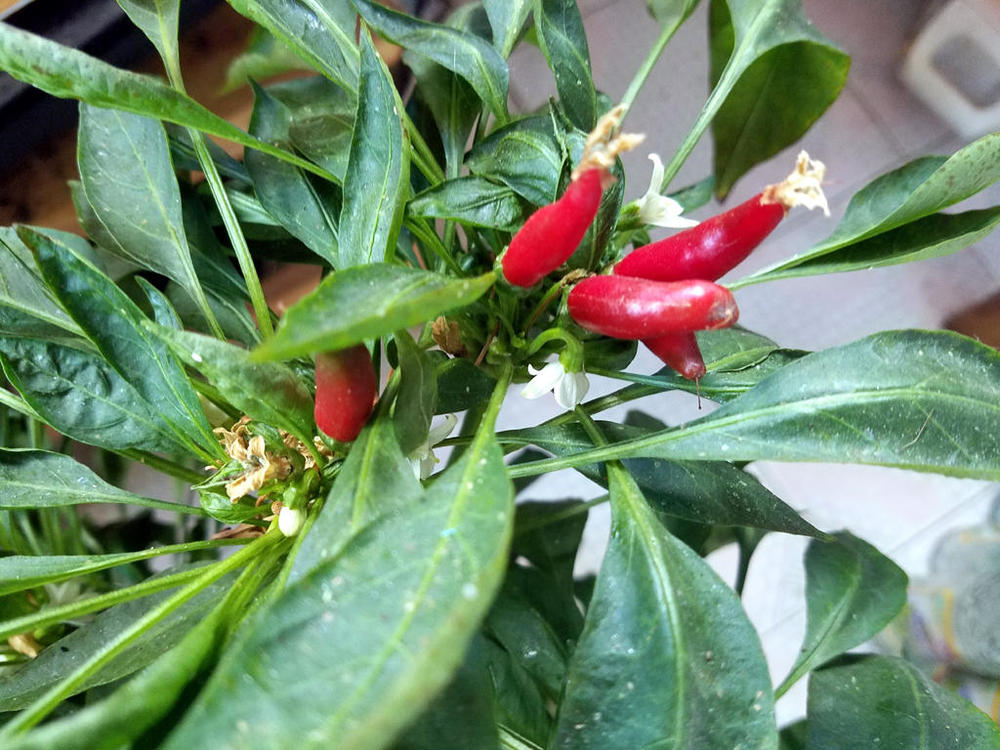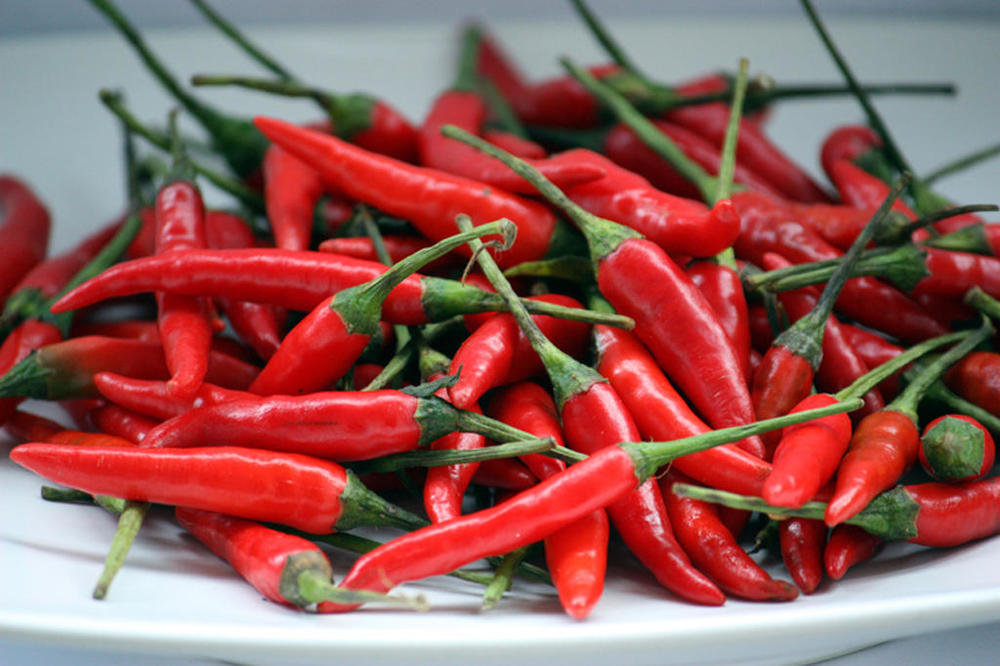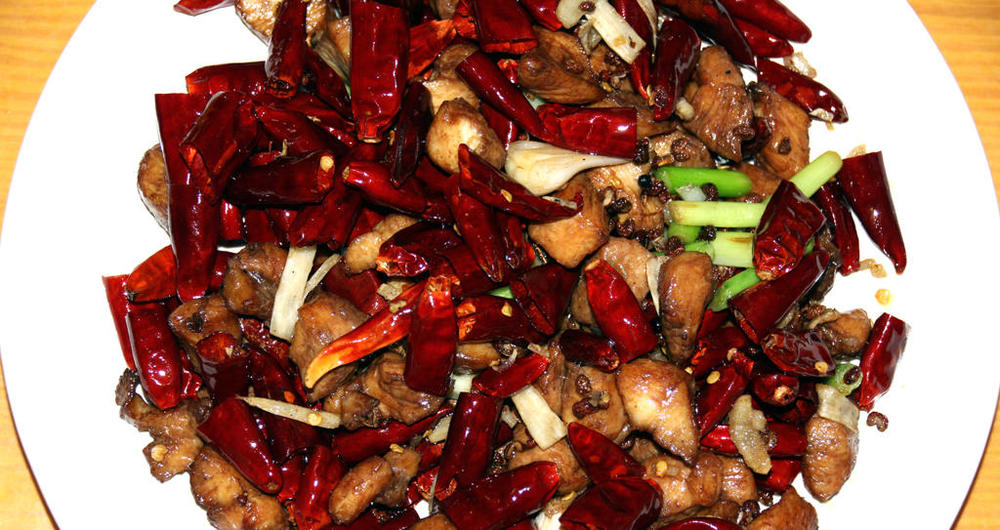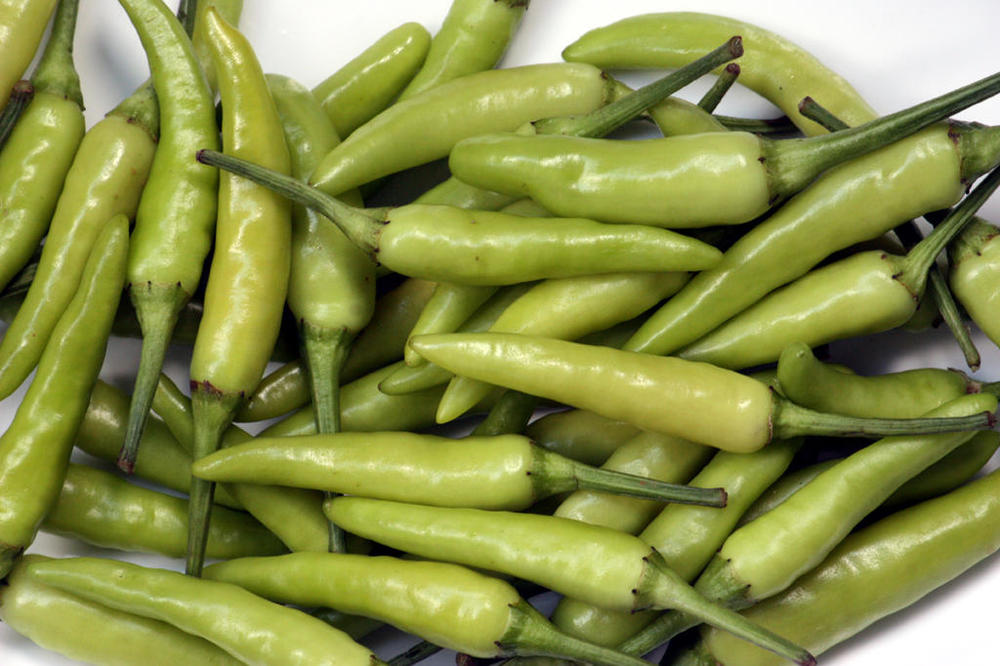Peter Piper picked a peck of pickled peppers.
If Peter Piper picked a peck of pickled peppers,
where's the peck of pickled peppers Peter Piper picked?
I'm going to be picking away at the peppers we get here in southern China.
The general term of peppers is 椒 (Mand: jiāo; Cant: ziu1), but just like the English word pepper, it is used for many different species of plant. Your ordinary black pepper, Sichuan peppercorns and the capsicums among others. I'm going to be looking at the capsicums here, because they are the ones used as vegetables. The hot chillies are referred to as 辣椒 (Mand: là jiāo; Cant: laat6 ziu1), 辣 meaning 'hot' in the sense of 'spicy'.
I'll only be giving the Chinese name for a few of them, as some are local cultivars and some I just plain don't know what they are.
I'm starting by looking to heaven for aid and inspiration.
When you think how much of China’s cuisine uses the various chilli peppers, it is impossible not to wonder what they did before these were introduced by the Portuguese relatively recently. Sichuan food is particularly well known for its liberal use of chillies, but Hunan probably uses more. Here in northern Guangxi and neighbouring Guizhou province they are freely used too.
Of course, as elsewhere, chilli peppers come in a variety of sizes, shapes, colours and degrees of ‘heat’. One of my favourites are the (originally) Sichuanese 朝天椒 (Mand: cháo tiān jiāo; Cant: ziu1ceng1 ziu1), often translated as ‘Facing Heaven Peppers’. These are more commonly known in Liuzhou as 指天椒 (Mand: zhǐ tiān jiāo; Cant: zi2 tin1 ziu1), which I will translate as ‘Point to the Sky Peppers’.
The names all come from the fact that, on the bush, the chillies literally point skyward, rather than hang down as do most other pepper varieties.
I grow these on my balcony, but they are easily available everywhere - markets, supermarkets and convenience stores.
Here the fresh ones are used in all sorts of dishes. Stir fries, braises, soups, hot pots. They are also used with garlic and ginger in and on whole fish for steaming.
In Sichuan, the chillies are nearly always used in the dried form. They are available in small bags of around 50 grams. They are not particularly hot, but Sichuan cuisine uses them in huge quantities. One of my favourite dishes, 辣子鸡 (Mand: là zi jī; Cant: laat6 zi2 gai1) uses the full 50g or more in one dish consisting of only two chicken breasts. There is less than 20g of the things in the picture below. The chillies are not actually eaten but impart a wonderful flavour to the dish. I’ve also had ribs cooked in this style and once or twice subbed rabbit for the chicken.
They are also used in the 'authentic' version of that restaurant favourite 宫保鸡丁 (Mand: gōng bǎo jī dīng; Cant: gung1 bou2 gai1 ding1) known in the west as Gongbao chicken or Kung Po Chicken.
The younger green chillies, are also sometimes available, but don't seem to get dried. At least, I've only ever seen them fresh or pickled.
These are known as 米指天椒 (Mand: mǐ zhǐ tiān jiāo; Cant: mai5 zi2 tin1 ziu1) or just 米椒 (Mand: mǐ jiāo; Cant: mai5 ziu1), although other unrelated peppers can also be called 米椒. 米 literally means ‘rice’ but is also used to to mean ‘small’ or ‘baby (as in immature)’.
Finally for now, there is a white variety, which I always buy when I can. Unfortunately, it isn't always around.
More to come






.thumb.jpg.aa287a90e375dd8ecfbcc84be7ba9a70.jpg)
